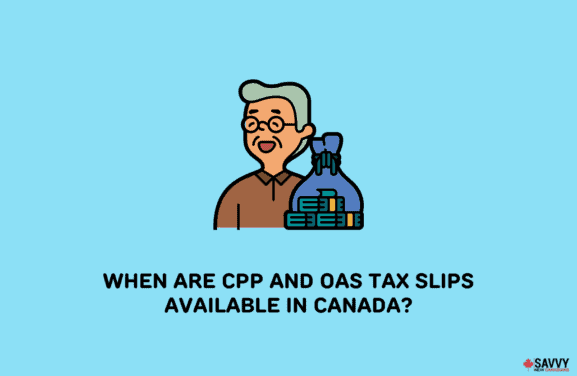If you are wondering whether you can have multiple TFSA accounts, the answer is ‘Yes.’
Canadians can open several Tax-Free Savings Accounts (TFSA) simultaneously and remain in good standing with the Canada Revenue Agency (CRA).
When you have more than one TFSA open, you must stay on top of the contribution and withdrawal rules to avoid penalties.
Read on to learn what to watch for when you have several TFSA accounts.
How To Manage Multiple TFSA Accounts
A TFSA account allows you to save or invest money tax-free.
You don’t pay taxes on the income, capital gains, or dividends earned by your TFSA portfolio, which is great.
Since there are no limits to how many TFSAs you can have, it is not surprising that millions of Canadians have two or more TFSAs. In fact, as per a CRA statistic in 2019, 3,889,470 TFSA holders had more than one account as of the 2017 contribution year.
There are some risks when you have multiple TFSAs, and I cover how to manage them below.
1. Keep track of TFSA Contribution
Your annual contribution limit remains unchanged even if you have multiple TFSA accounts.
For 2023, the contribution limit is $6,500. If you have been eligible to contribute to a TFSA since its introduction in 2009, your lifetime limit for the TFSA is now $88,000 (this amount assumes you have never contributed).
If you exceed your contribution limit for the year, you will be subject to a 1% monthly penalty tax on the overcontribution amount.
The CRA can also ask you to return any gains realized on the excess contributions.
Here are some tips on how to correct a TFSA over-contribution.
Track contributions across your TFSAs to avoid exceeding your limit. A simple spreadsheet can help. While you can track your TFSA contribution room using the CRA MyAccount, there is a significant lag.
For example, your contributions until the end of the previous year may not be updated until tax season.
Here are the annual TFSA contribution limits over the years:
| Year | Annual Contribution Limit |
| 2009 | $5,000 |
| 2010 | $5,000 |
| 2011 | $5,000 |
| 2012 | $5,000 |
| 2013 | $5,500 |
| 2014 | $5,500 |
| 2015 | $10,000 |
| 2016 | $5,500 |
| 2017 | $5,500 |
| 2018 | $5,500 |
| 2019 | $6,000 |
| 2020 | $6,000 |
| 2021 | $6,000 |
| 2022 | $6,000 |
| 2023 | $6,500 |
| Total | $88,000 |
2. Keep Track of TFSA Withdrawals
As with contributions, there are TFSA withdrawal rules you must follow.
You can withdraw funds from your account anytime. However, you will need to wait until the following year to recontribute the amounts withdrawn.
For example, if you withdraw $10,000 from your TFSA in 2023, you can recontribute this $10,000 in 2024, plus your standard contribution limit in 2023.
If you have more than one TFSA, keeping track of withdrawals across accounts is even more important, as you can lose track easily.
You may still be able to contribute to a TFSA in a year when you withdraw, only if there is outstanding contribution room.
A TFSA withdrawal only increases your contribution room in the next calendar year.
Replacing withdrawals in the same year if you don’t have contribution room will result in an over-contribution and a penalty tax.
TFSA withdrawal example: John turns 18 in 2022 and opens a TFSA account. His available contribution room is $6,000 (the annual limit for 2022).
| Date | Scenario | Available contribution room |
| March 1, 2022 | John (age 18) opens TFSA | $6,000 |
| March 5, 2022 | John contributes $5,000 | $1,000 |
| July 5, 2022 | John withdraws $3,000 | $1,000 |
| August 5, 2022 | John contributes $1,000 | $0 |
| September 5, 2022 | John withdraws $2,000 | $0 |
| January 1, 2023 | John gets a new annual TFSA contribution limit | $5,000 (withdrawals in 2022) + Annual limit for 2023 |
3. Watch Out For Investment Fees
Splitting your TFSA across many accounts can potentially increase your investment fees.
For example, for a professionally managed account at Wealthsimple, you pay a 0.50% management fee on accounts with assets below $100,000.
If your portfolio exceeds $100,000, this management fee drops to 0.40%.
Similar pricing schedules and discounts apply to other robo-advisors.
With one TFSA, it is easier to reach higher asset thresholds where fee savings are possible.
There are savings to be had even with DIY self-directed trading accounts. Unless you use a commission-free brokerage like Wealthsimple Trade or a broker that waives inactivity fees like Questrade, a smaller registered account (TFSA or RRSP) can incur quarterly account maintenance fees.
For example, you may need to pay $25 each quarter if your combined investment balance is less than $15,000 at TD Direct Investing and BMO InvestorLine.
4. Close Unused TFSA Accounts
If you have unused TFSA accounts, consider closing them to avoid problems and make tracking easier.
This also applies if you have TFSA accounts holding similar assets. You can transfer assets from one TFSA to another without tax implications if you do it right.
While there may be a bank charge for TFSA transfers, some brokers cover this charge.
Learn more about TFSA transfer fees.
Conclusion
You can open multiple TFSA accounts at the same time. Ensure you keep track of contributions and withdrawals to avoid paying a penalty tax on an otherwise tax-free account.
FAQs
As of 2022, the lifetime contribution limit for the TFSA is $81,500. This limit applies if you haven’t made any contributions and have been eligible since 2009.
No, you may want to open several TFSAs to keep separate accounts for different financial goals or to access different investment products offered by investment companies.
Check your TFSA contribution limit by visiting your CRA MyAccount. If you have never contributed and were 18 and a resident in Canada as of 2009, your total contribution limit in 2023 is $88,000.
No, contributions to your TFSA are not tax-deductible like the RRSP. Also, you don’t need to report investment gains on your tax return, whether it’s from interest income, capital gains, or dividends.
Related:



